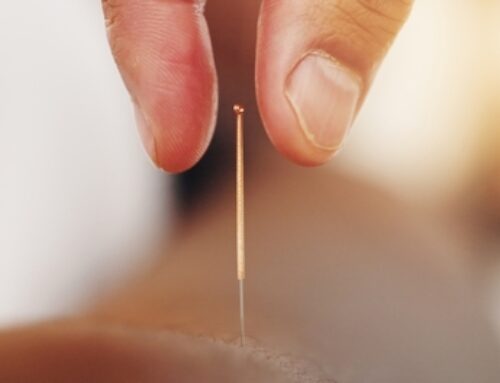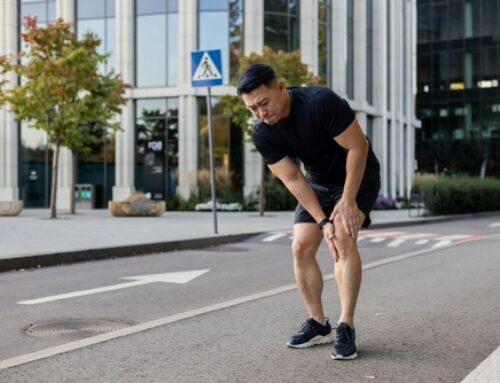Most musculoskeletal conditions, aside from traumatic causes, are created by overuse. Conditions of the foot and knee are no different. We diagnose these conditions in western medicine with names like: plantar fasciitis, torn meniscus, arthritis, Achilles tendonitis, IT band syndrome, patella-femoral syndrome, bunions, and runner’s knee.
These conditions are characterized by an overload mechanism combined with overuse and the inability to recover. Over time these chronic and progressive injuries develop.
The Traditional Approach
Traditional medicine often treats these conditions as isolated problems of localized traumatized tissue. Treatment is focused on the painful area and ends when the pain diminishes. Treatments of choice are frequently rest and medications to mask or reduce pain. Like perfume on a pig, when the medication wears off or activity resumes, the pain returns. This often leads to a surgical intervention, which may or may not relieve the problem.
At
1st– Understand the mechanism of pain.
2nd– Reduce the overloading mechanism.
3rd– Improve joint stability.
4th– Reduce pain and inflammation.
5th– Improve the healing rate of the body.
Understand the Mechanism of Pain
 The study of foot and knee biomechanics is beyond complex. Thirty bones comprise each leg and foot with 36 joints and more than 100 muscles. The knee and foot are engineering marvels in both flexibility and stability; however, they do not exist in a vacuum. The vast majority of foot and knee problems are the result of hip and core instability. Weakness in the hip and core muscles of the torso cause biomechanical overloading of the lower extremity. When combined with poor balance, over training, and/or a sedentary lifestyle, injury will occur. To ascertain the biomechanics problems of the lower extremity, movement screens are employed. Gait analysis, squat, lunge testing, one-leg balance test, and the one-leg step down are common tests to assess lower extremity issues. These tests don’t show where the pain is located; they show why the area of pain is being overloaded so the root cause can be addressed.
The study of foot and knee biomechanics is beyond complex. Thirty bones comprise each leg and foot with 36 joints and more than 100 muscles. The knee and foot are engineering marvels in both flexibility and stability; however, they do not exist in a vacuum. The vast majority of foot and knee problems are the result of hip and core instability. Weakness in the hip and core muscles of the torso cause biomechanical overloading of the lower extremity. When combined with poor balance, over training, and/or a sedentary lifestyle, injury will occur. To ascertain the biomechanics problems of the lower extremity, movement screens are employed. Gait analysis, squat, lunge testing, one-leg balance test, and the one-leg step down are common tests to assess lower extremity issues. These tests don’t show where the pain is located; they show why the area of pain is being overloaded so the root cause can be addressed.
Reduce the overloading mechanism
Once the biomechanical overloading mechanism has been observed, diagnosed treatment can begin. Treatment in the form of Active Release Technique®, chiropractic manipulation, and self-stretching are used to reduce the tightness or load being placed on painful tissue. Frequently these treatments work very quickly to reduce the problem, but not the pain. Pain is usually a chemical reaction and tends to take time to dissipate. (We address this issue in step 4 of the [CORE] approach.) If treatment only focuses on the chemical side of pain, the real problem will not be addressed and, like the stink of a pig, it will return. ART®, Chiropractic manipulation, and other physical medicine modalities are the quickest and most effective means to address the real reason behind foot and knee pain.
Improve Joint Stability
Improving joint stability begins with reducing the overloading mechanism and continues with rehabilitative exercise. Most overloading mechanisms are initiated with muscle weakness of a muscle far removed from the painful area. These muscles need to be strengthened in order to improve joint stability and therefore remove the overloading mechanism creating the pain. Weakness in the hip and core often precipitate the pain in the foot and knee. A well-rounded treatment protocol must include exercises to improve these areas and help reduce stress on the foot and knee. At [CORE] we strive to use functional exercises that resemble activities found in daily life as opposed to exercises only found in the gym. Exercises like squats, lunges, standing on one foot, jumping rope, and other specific lower extremity movements are used to improve joint stability.
Reduce Pain and Inflammation
Part of the [CORE] approach is to directly deal with the pain and inflammation of the foot and knee. We use several powerful tools. Most often the patient is simply advised to apply ice. This simplistic tool is extremely powerful when applied properly. The most effective application of ice is simply placing ice in a zippered plastic bag. This application out-performs reusable freezer packs and frozen peas. The use of acupuncture is also employed to reduce pain. This tool has been used for over 3,000 years to reduce pain. Acupuncture not only works locally, it works globally to reduce pain and improve the healing rate of the body. Finally, the tool of good nutrition is always advised. Foods high in anti-oxidants reduce pain and inflammation. These foods are color-coded. The darker fruits and vegetables are very high in anti-oxidants and help reduce inflammation and pain in the affected areas.
Improve the Healing Rate of the Body
Improving the healing rate of the body requires change. The body needs time and the necessary tools for proper healing. Muscle repair needs an important host of nutrients, none more important than L-glutamine. L-glutamine is the most common amino acid in skeletal muscle and is required in times of stress. L-glutamine supplementation is frequently used in major rehabilitation hospitals to “jump start” the recovery process after injury. L-glutamine is most important for athletes and those with a history of poor nutrition. Likewise, fish or flax oil can be an important tool for healing of the joints and tendons. The omega-3 fats found in fish and flax oils have an anti-inflammatory effect on the injured tissues plus the components needed to rebuild healthy cell membranes. These fats are necessary for healthy cartilage and prevention of arthritic damage. Without this vital tool, the healing rate of the body is greatly reduced. Fish and flax oil can also be used to help lose body fat, build stronger muscles, improve insulin stability and metabolism, and reduce the risk of cancer.
We are here to help you find the source of your pain and heal your body in the most natural way possible. Please call our Roanoke, Virginia office at 1-540-344-1055 to schedule an appointment and begin your journey to fewer aches and pains. You’re also invited to check out our Facebook page for more information, tips, and recipes.
Dr. Daryl Rich, DC, CSCS





